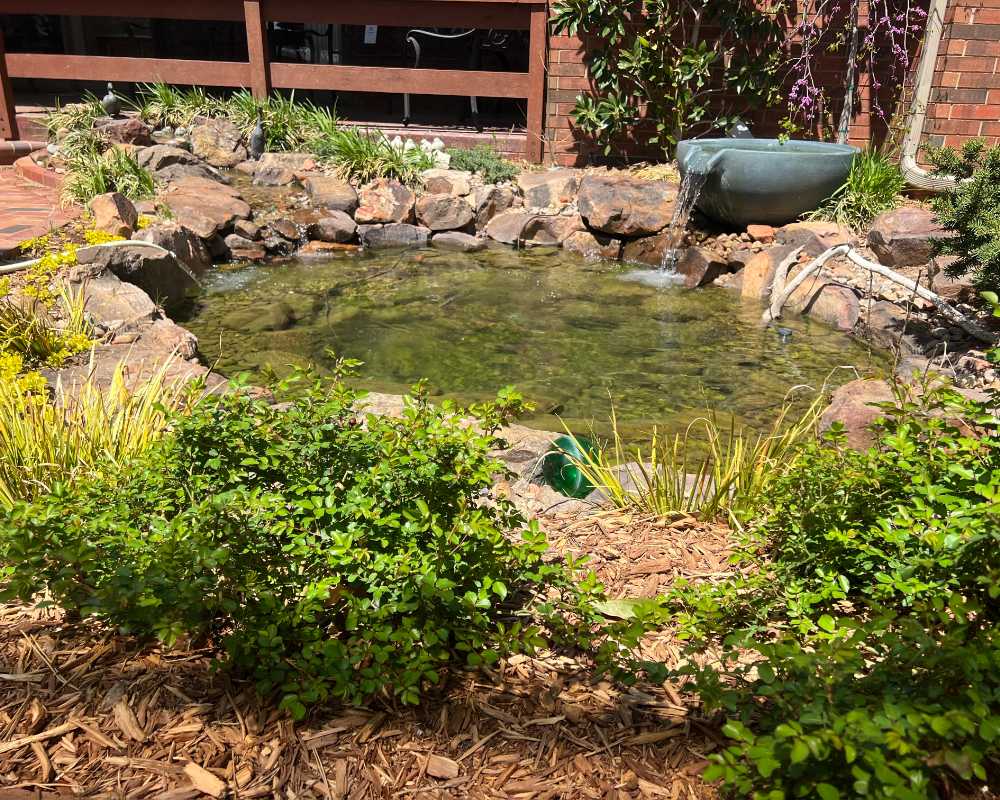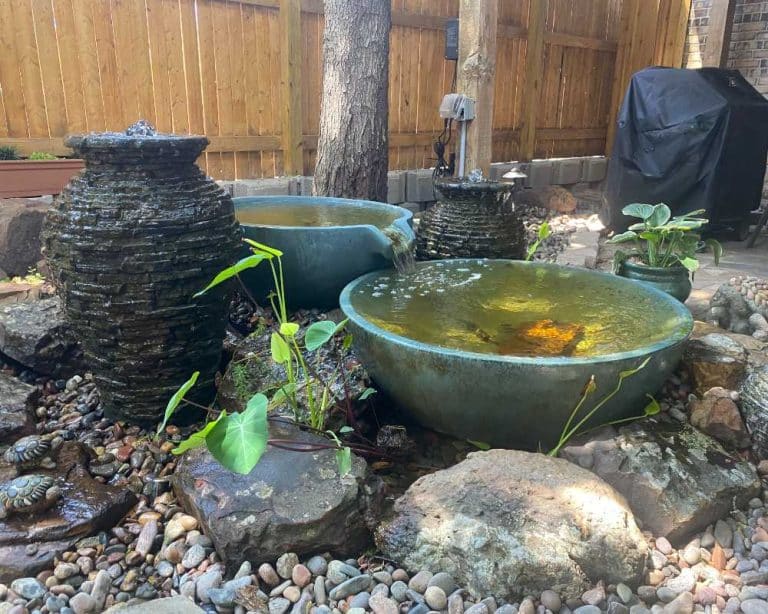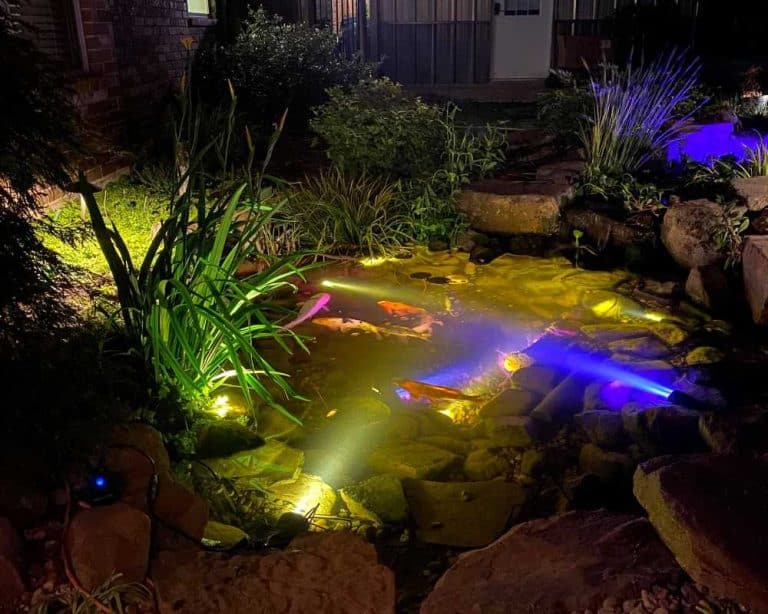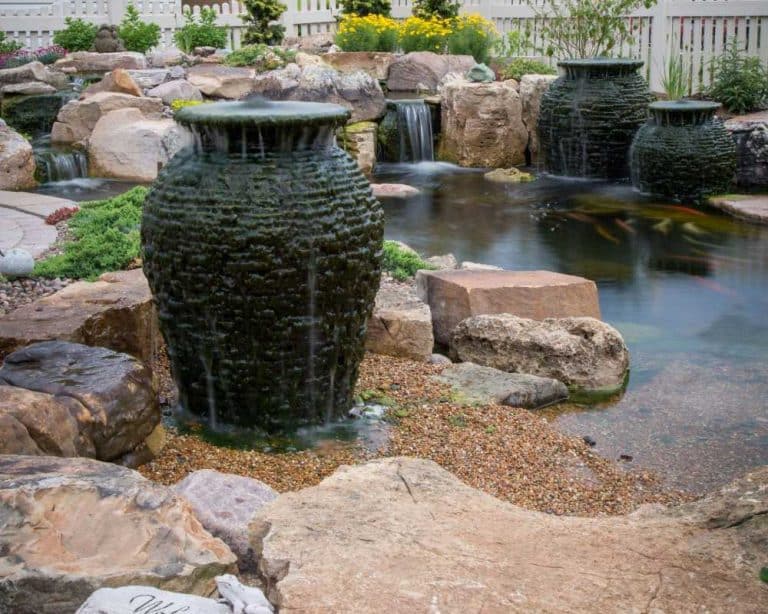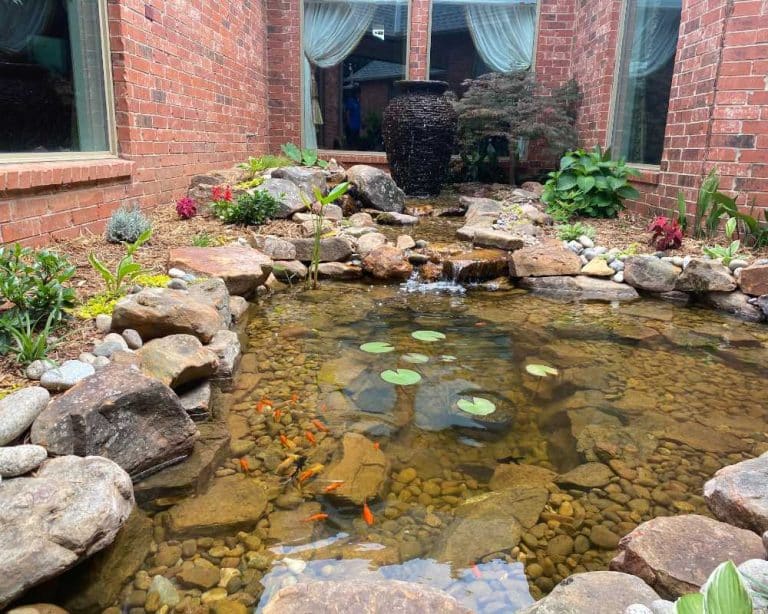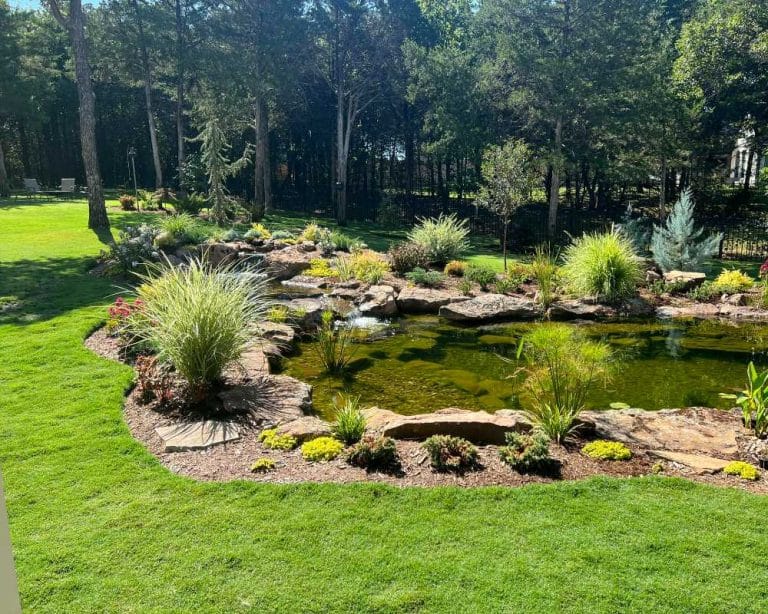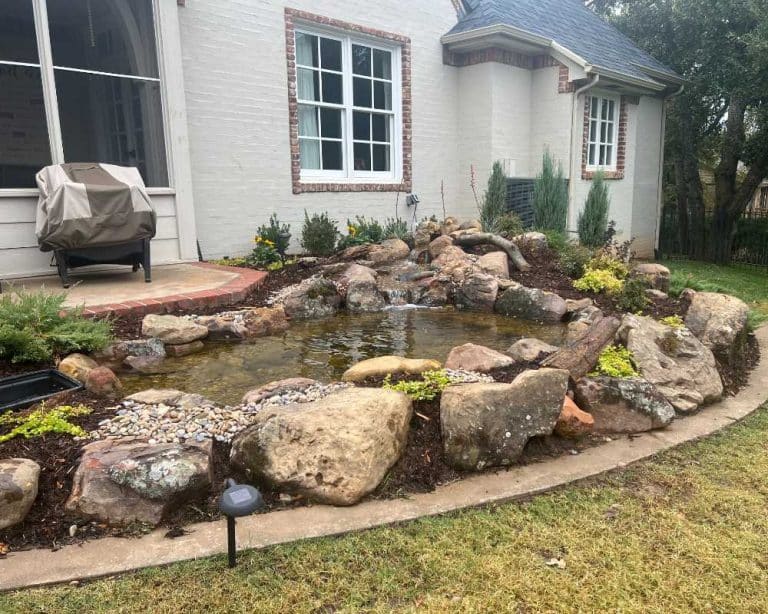Remove the Dirt: Cleaning Tea-Colored Pond Water
Pond owners may have experienced this: You leave your beautiful pond untended for a few days. Then you get caught up with life, and days turn to weeks, and weeks turns to months. Then you take a break, stepping outside to enjoy your yard, and behold! Your clear, clean pond water has turned a dark, tea color. What happened?
What is Tea-Colored Water?
If your pond is looking more brown than usual these days, grab a clear glass jar, scoop some water out and look at it. Does it have a brownish tint? If yes, then you have tea-colored water. Don’t be discouraged! This condition is common, and relatively easy to deal with. It will take a little bit of effort on your part, and require a small investment. This effort is part of the regular maintenance of owning a pond, and once you make it, you will have a clear pond that will bring joy to the friends and family you share it with.
If the water you draw out is clear, then the brown you are seeing is the scum that has accumulated on the rocks and other features at the bottom. The recipe for dealing with the problem is the same as if you have tea-colored water. And if you ignore this problem long enough, you will end up with tea-colored water! So either way, read on!
The Cause of Tea-Colored water
There are two main causes of this condition, and thus two kinds of treatments. If the brown particulates in your jar of water settle to the bottom overnight, then you have a sediment problem. Sediment is physical material: Dirt, debris, organic material that has crumbled, waste from pet fish or birds, etc. Sediment collects at the bottom of your pond, but it can also remain suspended in the water long enough to make it a dirty brown color. The sediment can build up in your pond’s filter and cause it to clog.
Brown water can also be caused by certain chemicals called tannins. Tannins are polyphenolic molecules that organic material produces when it breaks down. If the water in your jar remains brown the next morning, then you almost certainly have tannins in your pond. Tannins cause leaves to turn brown after they fall from a tree. Having decaying organic material in your pond will eventually give your water a brownish tint, just as a giant tea bag would.
Professional Koi Pond Installation in Oklahoma
Getting a professionally installed Koi pond in your home is only a short phone call away. At Oklahoma Ponds, we have over 30 years of koi pond installation expertise in the great state of Oklahoma. We are Oklahoma City’s fastest growing pond contractor, and that is not by accident. We strive to be the leader in all things garden ponds and water features. Every service we offer comes with a 100% satisfaction guarantee. Why choose us?
Specialized Company
We specialize in the care and construction of garden koi ponds. This allows us to stay up to date with the latest technology and advances in our industry
Dependable Services
Each of our technicians are thoroughly trained in the care and construction of garden ponds and water features. All of our services come with a 100% satisfaction guarantee!
Reputable Company
Every service comes with our 100% satisfaction guarantee. Our company’s reputation is impeccable, just take a look at our Google Reviews.
Treatment for Tea Color or Brown Water
You may have sediment, or tannins, or both in your water. Either way, there are specific remedies that will help you get your clean pond back. We present these steps in order to help you prioritize solving this problem; if you follow these steps and perform regular maintenance, your problem should go away.
- Clean your Pond
Whether you have tannins or sediment, decaying organic material can contribute to both. Scan the surface and perimeter of your pond for twigs, leaves, seeds (acorns, for example), droppings, or anything else you can easily remove with a skimmer net or similar tool. You will also need to scour the rocks and bottom for scum and other settled sediment. The best tool for this is a pond vacuum.
- Check your Filter
You may need to replace your filter. A good filter will collect much of the sediment you are trying to remove. Check to make sure your filter is relatively clean and water is flowing through it properly, and it will do much of the work for you.
- Change your Water
Although steps 1 and 2 will remove quite a bit of the problem and the cause, replacing some of your pond’s water with some fresh water will have a direct effect. Keep in mind, if you are using tap water to do this, you will likely need to treat it with a water conditioner. A conditioner, also called a softener, will reduce the effects of heavy metals present in the water, and neutralize certain chemical compounds like ammonia and chlorine. This is beneficial and often necessary for any marine life you may have living in or visiting your pond.
- Add Beneficial Bacteria
Beyond your conditioner, there are other beneficial water treatments that you can employ to facilitate the breakdown of organic compounds in a manner which will not stain your water. Certain bacteria will feed on the compounds generated by decaying organic material, thus keeping your water clean. Consult an expert in pond care to ensure that the bacteria you select will be appropriate for your climate, system, and wildlife, and follow the instructions for its use.
- Add Activated Carbon
The last and most effective step in keeping your pond free of the stain caused by tannins is adding activated carbon. Following the instructions, place the sealed bag of charcoal in a location where the water passes through at a high rate. The carbon in the charcoal will bind with the tannins (and other unwanted compounds) to remove them from your water. Soon after, your water should appear clean and clear.
Preventative Maintenance
Once you have cleaned your pond to your liking, develop a regular maintenance schedule. This schedule should include cleaning your pond and also check the filter. The removal of twigs, leaves, and other debris should happen regularly, whereas the scouring of the bottom can happen less often. Your filter’s instruction manual should tell you how often to change it.
Any time you replace a significant amount of the water in your pond, you may have to re-introduce any compounds you use to treat the new water. Make sure that your water conditioner, beneficial bacteria, and activated charcoal are stored in a cool, dry place, properly sealed, to prevent spoilage. Follow the instructions for replacing your charcoal bag as needed. Not everybody has the time to perform regular maintenance on their pond. But at least by creating a proper schedule and putting it in a place where your household can see it, you will know what you should be doing. Getting organized will serve you well in ensuring that your pond remains pristine for as long as you own your home. And you won’t have to worry about whether it is in good shape when your friends and family come to visit.

